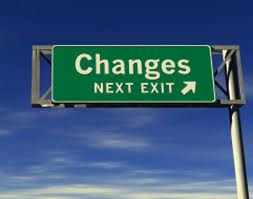Back in 1995, when Robert Loest and I were telling the world about our new mutual fund IPS Millennium, we told a story explaining that, historically, change within a civilization first occurs at an inflection point and is followed by big change and then a long plateau period.
We shared how civilization started with hunter-gathers, and people maintained that lifestyle for over 100,000 years. Then, we had an inflection point, learning to plant seeds and grow food. This was the Agricultural Revolution of the Neolithic Era, and it went on for a few thousand years. Then around 1439, Gutenberg invented the printing press, and the advent of real sustained knowledge accumulation and transfer took place.
Sharing information through books led to the invention of the Watt Steam Engine in the 1760s or 1770s, and this really kicked off the Industrial Revolution, which lasted about 100 years. The transistor was then invented around the 1940s, and the Information Age was born. This lasted for about 50 years.
Then in 1995, we entered the Wired Internet Age and dawn of connectivity in real time, all the time, which has lasted around 15 years. Now, we have kicked off the Mobile Era and the dawn of wireless connectivity.
As you can see, the timing of our mutual fund and the start of this new era lined up perfectly. Even though we proclaimed that investing in a connected world would create value, we were unaware of just how connected the Netscape browser was going to make us.
I am sure you noticed how each era has gotten shorter and shorter. Change progressively occurs faster, and some of the issues for business today center around this disruption which happens when we hit a new inflection point, and the game suddenly changes for everyone. However, this also creates massive opportunity for entrepreneurs! Anyone listening . . . especially with the new inflection point of mobile?
I was reminded of that story we told when I read a blog by David Meerman Scott on what he calls the 2nd most important communication revolution in history. When you step way back and, as David says, take a “view from the moon,” you see that the first communication revolution was bolstered by Gutenberg’s invention of mechanical movable type. This allowed books to be mass produced and freed people to more easily share information around the world, so they could go out and invent things and build on one another’s ideas. This changed the world, a world that had not changed much since the beginning of time.
We are now in what David calls the 2nd communication revolution, which started in 1995 with the invention of Netscape, allowing us to have easy web browsing capability. We are living through this time and the major changes that are occurring. We’ve gone from a few million online to billions in short time frame, and it continues to grow.
David explains how real time communication is vital in this new age and that “you are what you publish.” So, are you putting content out there on the web in real time? Check out his video.
Marketing and Leadership Speaker David Meerman Scott from David Meerman Scott on Vimeo.
I would like to thank David for inspiring me. When we met about 4 years ago, he was the one who told me to start writing a blog. It took a little while to sink in, but about 3 years ago, I started blogging sporadically, and shortly after I began posting a blog every week. We are living in the times of sharing content. Are you?
 in business. With the framework we have built, we can add a custom cover to create a product more quickly and with less cost than if we rebuilt one each time from scratch. This is a powerful aspect you get from software.
in business. With the framework we have built, we can add a custom cover to create a product more quickly and with less cost than if we rebuilt one each time from scratch. This is a powerful aspect you get from software.


 time! One of the islands,
time! One of the islands, 



